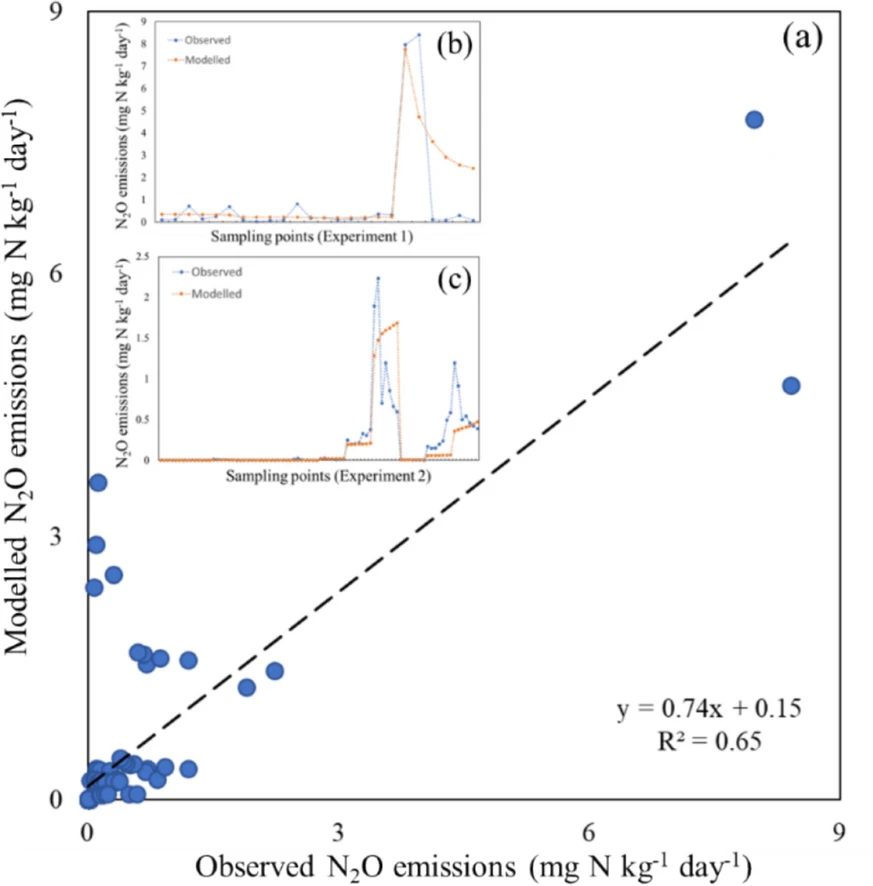Estimating fractions of N2O emissions from nitrification and denitrification using data assimilation
Pan, B., Huang, Y., Xia, L., Liang, J., Liu, R., Luo, Y., Du, Z., Chen, D., & Lam, S. K., Estimating fractions of N2O emissions from nitrification and denitrification using data assimilation. Biogeochemistry, 168 (5). DOI: https://doi.org/10.1007/s10533-025-01268-x
Nitrous oxide (N2O) emissions play a significant role in global warming and stratospheric ozone depletion. Nitrification and denitrification represent the primary pathways of N2O emissions in agroecosystems. However, modelling the responses of nitrification, denitrification, and subsequent N2O emissions to soil conditions and nitrification inhibitors remains challenging, as the fractions of N2O emissions derived from nitrification and denitrification used in model simulations cannot be directly measured. In this study, we estimated soil nitrification, denitrification, N2O emissions, and their related parameters via data assimilation under various soil moisture levels [water-filled pore space (WFPS) at 50% and 70%], incubation temperature (15, 25 and 35 °C) and nitrification inhibitor application (DMPP, 3MPTZ and C2H2) in cereal and vegetable production systems in Australia. We found that the contribution of nitrification to N2O emissions (i.e., the fraction of N2O emitted from nitrification, ) decreased with increasing temperature and moisture content, whereas denitrification dominated N2O production (i.e., the fraction of N2O emitted from denitrification, ) under 70% WFPS regardless of temperatures. Under fertilizer N application, the use of nitrification inhibitors decreased but increased . The efficacy of nitrification inhibitors in mitigating N2O emissions varied with environmental conditions. In this study, we demonstrate the use of data assimilation to constrain key parameters for predicting nitrification, denitrification and associated N2O emissions in response to soil environments and management practices. Integrating this technique into ecosystem process-based models has the potential to enhance model accuracy by reducing uncertainties and biases.




